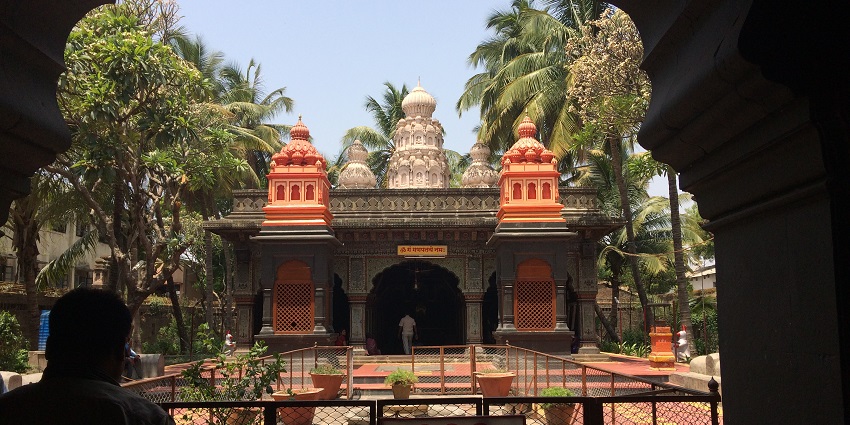
‘ ); } ?>
Table of Contents
Mangad Fort

Nestled in the scenic hills of Maharashtra, Mangad Fort is a testament to the rich heritage and indomitable spirit of the Maratha Empire. This historical fort, once a strategic military stronghold, offers a glimpse into the past with its rugged architecture and awe-inspiring surroundings. Positioned at a height, it provides breathtaking panoramic views of the lush greenery and rolling hills, making it a haven for nature lovers and history enthusiasts alike.
Mangad Fort holds a special place in Maratha history, having witnessed numerous battles and played a pivotal role in safeguarding the region. Though much of its structure is in ruins today, its sheer presence still exudes strength and resilience. The trek to Mangad Fort is an adventure in itself, offering an exciting challenge for trekkers. As you explore the fort, you’ll step back in time and feel the echoes of Maratha warriors who once defended their land with unparalleled courage.
Historical Significance of Mangad Fort
Mangad Fort, a lesser-known but historically important fort, holds a special place in the rich tapestry of Maharashtra’s Maratha history. Located in the Sahyadri mountain range, Mangad Fort was strategically built to serve as a military stronghold, playing a crucial role in defending the region against enemy invasions and safeguarding key trade routes that passed through this part of the Western Ghats. While not as well-documented as other Maratha forts like Rajgad, Sinhagad, or Pratapgad, Mangad Fort’s significance lies in its location and its contribution to the defense strategies employed by the Marathas during their peak.
The Maratha Empire and the Role of Mangad Fort
The Maratha Empire, founded by Chhatrapati Shivaji Maharaj in the 17th century, relied heavily on a network of forts to protect its territory from external threats. These forts were more than just military structures; they were key elements in the Marathas’ strategies to secure control over their land and safeguard their people. Mangad Fort, with its commanding position and natural defense features, was one such fort that helped the Maratha rulers monitor and defend the region from invaders.
Although there are limited specific historical records about Mangad Fort’s exact role during Shivaji Maharaj’s time, it is generally believed that the fort was constructed under the Maratha Empire’s expansion efforts to strengthen control over the region. The fort is thought to have been used for surveillance, to monitor the movements of enemy forces, and as a refuge during times of crisis. It is located near other major Maratha forts, which suggests that it played a complementary role in the defense system of the region.
Strategic Importance of Mangad Fort
The fort’s strategic location on a hilltop offered natural fortification, with steep slopes and thick forests surrounding it. This made it difficult for enemy forces to approach undetected, giving the Marathas an upper hand in any confrontations. The fort was likely used as a key watchtower for spotting enemy armies moving through the valleys below. Its proximity to other forts in the region such as Rajgad, Torna, and Purandar suggests that it was part of a larger defense network aimed at protecting the southern part of the Maratha Empire.
The Marathas were known for their guerrilla warfare tactics, and Mangad Fort, with its high vantage point, would have provided the perfect setting for such strategies. The fort’s design, with thick stone walls and bastions, indicates that it was intended to withstand prolonged sieges. It is believed that Mangad Fort was used by the Marathas not only as a military base but also as a place to store provisions and resources essential for the sustenance of soldiers and civilians during times of war.

Battles and Legacy
While detailed accounts of specific battles fought at Mangad Fort are not well-documented, it is likely that the fort witnessed several skirmishes and attacks from rival forces seeking to weaken the Maratha Empire. The Marathas faced constant challenges from various enemies, including the Mughals, the British, and the Siddis of Janjira. During the reign of Chhatrapati Shivaji Maharaj and later, his successors, the fort would have played an important role in defending the empire’s western borders.
The Maratha military tactics, often involving swift, surprise attacks and rapid retreats, were highly effective in mountainous terrain like that around Mangad Fort. As a result, even though the fort may not have been a focal point in large-scale battles, it likely served as a critical component in the defense and counter-offensive operations that the Marathas carried out during their wars.
Post-Maratha Era and Decline
After the decline of the Maratha Empire in the 19th century, Mangad Fort, like many other forts in Maharashtra, lost its military importance. Following the British victory over the Marathas, the fort fell into disuse and eventually started to deteriorate. Over the years, the fort has suffered from neglect, and much of its original structure has crumbled. However, the ruins of Mangad Fort still stand tall as a reminder of the resilience and valor of the Maratha warriors who once defended it.
The fort’s enduring presence is a tribute to the Maratha spirit of courage, strategy, and resourcefulness. Even today, as one explores its ruins, it is easy to imagine the fort’s pivotal role in shaping the destiny of the region and the Maratha Empire.
Trekking to Mangad Fort: A Journey Through Nature and History
The trek to Mangad Fort offers an exciting and rewarding experience for adventure enthusiasts, history buffs, and nature lovers alike. Located about 90 kilometers from Mumbai, the fort can be reached by embarking on a moderate-level trek that not only tests your stamina but also allows you to immerse yourself in the beauty of the Western Ghats. The journey to the fort, with its stunning landscapes, historical remnants, and lush greenery, makes it a unique experience for trekkers.
Base Village: Starting Point of the Trek
The trek to Mangad Fort begins at the base village of Mangad, a quiet and quaint settlement nestled at the foot of the Western Ghats. This village serves as the ideal starting point for your journey. Depending on your mode of travel, you can reach the base village by car or public transport from Mumbai. The drive takes around 2 to 2.5 hours, depending on traffic conditions, and is a relaxing ride through the scenic countryside.
Upon arrival at the base village, you’ll be greeted with a refreshing atmosphere, far removed from the hustle and bustle of urban life. The village is typically quiet, with only a few houses scattered around, allowing you to fully appreciate the peaceful surroundings before setting off on your trek. Before beginning, it’s a good idea to have a light meal and carry water, snacks, and any necessary trekking gear, such as sturdy footwear, a hat, and a raincoat, especially if you’re trekking during the monsoon season.
The Trekking Trail: A Journey into the Wild
The trail to Mangad Fort begins gently but gradually becomes steeper as you ascend into the forested hills. The initial part of the trek is a pleasant walk through a wide path, surrounded by the dense vegetation of the Western Ghats. As you move deeper into the forest, you’ll find yourself surrounded by tall trees, including teak, bamboo, and other tropical plants that form a canopy overhead. The air is fresh and cool, filled with the earthy scent of the forest floor and the rustling of leaves in the breeze.
The trek is not particularly difficult but does involve some moderate climbs and rugged terrain. The path may sometimes get slippery, especially during the monsoon, so it’s essential to keep your footing steady. The forest canopy gradually opens up, revealing breathtaking views of the surrounding hills and valleys. Along the way, you’ll also come across several small streams that trickle down the slopes, providing a refreshing sight and an opportunity to hydrate.
As you ascend higher, the trail becomes steeper, and you may have to navigate over rocky outcrops, which can be challenging but add to the excitement of the trek. The climb becomes more demanding, but the rewarding views of the lush landscape below and the cool mountain air will keep you motivated. The trek itself typically takes around 3-4 hours, depending on your pace and the number of breaks you take.
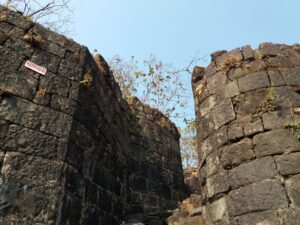
Natural Beauty Along the Trail
One of the highlights of the trek to Mangad Fort is the natural beauty that surrounds you. The path is a visual treat, with vibrant flora, towering trees, and stunning landscapes unfolding at every turn. During the monsoon season, the region comes alive with lush greenery, with the forest appearing almost tropical in its abundance. You’ll pass through areas where ferns, wildflowers, and moss-covered rocks create a picturesque scene.
Wildlife is abundant along the route, and you may be lucky enough to spot some small mammals, birds, and insects as you hike. The chirping of birds, the rustling of leaves, and the sound of water flowing down the streams add to the tranquility of the journey. If you’re a birdwatching enthusiast, you might spot species like the Indian eagle, kestrels, or colorful sunbirds along the way.
The highlight of the journey is when you near the top of the hill. As the forest opens up, you’ll be treated to sweeping views of the surrounding hills and valleys of the Western Ghats, making every step of the climb worth the effort. The sight of the distant mountains covered in mist during the monsoon, or the golden glow of the sunset on clear days, creates a truly mesmerizing atmosphere.
Remnants of the Fort: Glimpses of History
As you reach the summit of the hill, the trail leads you through remnants of the fortification, adding a sense of historical intrigue to your trek. Though Mangad Fort is not as well-preserved as other forts in the region, the ruins still offer an insight into its glorious past. You’ll encounter crumbling stone walls, ancient watchtowers, and broken bastions that once stood as sentinels guarding the fort.
The fortification is quite simple compared to other grand Maratha forts, but it speaks to the strategic importance of Mangad Fort in the defense system of the Maratha Empire. The walls are made of thick stone, and you can still see some sections of the fortifications that were built to withstand attacks. Walking through these ruins offers a chance to imagine what life must have been like for the soldiers and inhabitants of the fort, adding an element of nostalgia to your trekking experience.
The remains of watchtowers offer panoramic views of the surrounding area, and it’s easy to picture how soldiers would have used these elevated spots to spot approaching enemies. Despite the erosion caused by time, the walls of the fort still evoke a sense of the strength and determination of the Maratha warriors who once defended it.
Reaching the Summit: The Fort’s Final Destination
Once you reach the summit of Mangad Fort, you’ll be rewarded with an incredible 360-degree view of the surrounding Western Ghats. The sight from the top is breathtaking, with valleys, hills, and forests stretching as far as the eye can see. This vantage point was likely one of the reasons the fort was constructed in such a strategic location—giving the Maratha forces a clear view of approaching enemies from miles away.
The summit is an ideal spot to relax, take in the views, and reflect on the journey. While there are no large structures or elaborate gates like those found in other forts, the simplicity of Mangad Fort gives it an almost mystical charm. Whether you sit and enjoy the peaceful atmosphere or explore the fort’s ruins further, you will surely feel a deep connection to the past as you stand atop this historical landmark.
Descending: The Return Journey
The return journey from Mangad Fort follows the same path back to the base village, but the descent is easier and faster than the ascent. However, it’s still essential to be cautious, as the slippery terrain can be tricky, especially if it’s raining or wet. Take your time during the descent to avoid injury, and enjoy the natural beauty surrounding you one last time before returning to the base village.
The Fort’s Structure and Features
Once you reach the summit, you’ll be greeted by the remnants of the fort. The fort’s structure, though dilapidated, still exhibits strong architectural features, such as thick stone walls and defensive bastions. There’s also a water tank at the top, which would have been used to store water for the soldiers stationed at the fort.
The most striking feature of Mangad Fort is its strategic location. From the top, you can view a series of other forts in the surrounding area, such as the famous Rajgad Fort, which was once the capital of the Maratha Empire, and Torna Fort. The fort’s design reflects its purpose as a watchtower and defensive post, with clear views of the surrounding area to spot any advancing enemy forces.
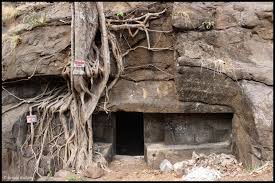
Nature and Wildlife Around Mangad Fort
Mangad Fort, tucked away in the serene hills of the Western Ghats, is not only a historical marvel but also a haven for nature lovers and wildlife enthusiasts. The surrounding region is a part of the Western Ghats, a UNESCO World Heritage Site, renowned for its exceptional biodiversity and rich ecosystem. This area offers a perfect blend of history, nature, and adventure, making it a unique destination for those seeking both cultural exploration and a connection with the natural world.
Flora: A Lush Green Paradise
The Western Ghats are home to a variety of plant species, many of which are endemic to the region. The dense forests surrounding Mangad Fort are abundant with tropical trees, shrubs, and flowering plants. During the monsoon season, the entire region transforms into a lush green paradise, with every corner of the forest becoming vibrant and alive with the seasonal rains. The trails leading up to Mangad Fort are lined with towering trees like teak, bamboo, and the famous ‘Sadaf’ trees, which offer a unique spectacle for nature enthusiasts.
The monsoon season brings with it an explosion of greenery, making it an ideal time for those who want to witness the true beauty of the forest. Ferns, mosses, and climbers cover the fort’s rocky walls, creating a dramatic effect as the mist envelops the surroundings. After the rains, the forests are dotted with colorful wildflowers, and the fragrance of wet earth and flowers fills the air, creating an invigorating atmosphere for all who visit.
Fauna: A Rich Diversity of Wildlife
Mangad Fort and its surrounding areas are also home to a diverse range of wildlife. The dense forests of the Western Ghats provide a sanctuary for many species, both large and small. While the fort itself does not have large wildlife, such as tigers or leopards, it is not uncommon to spot smaller mammals like monkeys, wild boars, and civet cats. These creatures can often be seen darting through the underbrush or perched on tree branches in the forest canopy.
The region is also home to several species of reptiles. Common species include various types of snakes, such as the Indian cobra and the pit viper, as well as monitor lizards and geckos. These reptiles play an essential role in maintaining the ecological balance of the region, keeping the rodent population in check and adding to the diversity of the wildlife here.
Birdwatching: A Birdwatcher’s Paradise
For birdwatchers, Mangad Fort is a true gem. The fort and its surrounding forests are home to a wide array of bird species, some of which are rare or endangered. The Western Ghats are an important bird habitat, and Mangad Fort provides an excellent vantage point for spotting these avian wonders. The dense forest cover and rocky terrain create the perfect conditions for a variety of bird species to thrive.
You may be lucky enough to spot the majestic Indian eagle, soaring high above the fort in search of prey. These powerful birds are a sight to behold, their sharp talons and keen eyesight making them one of the top predators in the region. In addition to eagles, you can also spot kestrels, small but agile raptors that often hover in the air as they search for food. The malabar parakeet, with its bright green feathers and vibrant colors, is another bird commonly seen in the area.
Several species of owls, such as the Indian eagle-owl and the brown fish owl, can also be spotted in the region. These nocturnal creatures can be heard hooting from the forest at night, adding to the mysterious ambiance of the fort. The Western Ghats also host a variety of songbirds, such as sunbirds, bulbuls, and warblers, which add a melody to the surroundings, especially during dawn and dusk.
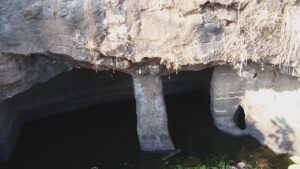
Insects: A Fascinating World of Micro Fauna
Mangad Fort’s biodiversity is not just limited to large mammals and birds; it also includes a rich variety of insects that play an integral role in the forest ecosystem. From butterflies and dragonflies to beetles and ants, the area is teeming with life. During the monsoon season, the forest floor comes alive with the movement of insects. Brightly colored butterflies flutter around the wildflowers, while dragonflies dart over the streams that flow down the hillsides.
Among the more fascinating insects are the fireflies that illuminate the forest during the monsoon nights. Their glowing bodies create a magical atmosphere, making the night hikes to the fort an unforgettable experience. You can also find a variety of grasshoppers, mantids, and caterpillars, all of which contribute to the region’s biodiversity.
Conservation and Ecological Significance
The ecosystem around Mangad Fort plays a vital role in maintaining the ecological balance of the Western Ghats. The forests help conserve the region’s water sources, regulate temperature, and provide shelter to countless species of flora and fauna. The Western Ghats are also an important watershed for several rivers in the region, making the forests crucial for preserving water quality and preventing soil erosion.
Conservation efforts are essential to protect this delicate ecosystem. As the region continues to face pressures from human activity, including deforestation and encroachment, it’s important that Mangad Fort and the surrounding areas be preserved for future generations. Wildlife conservationists and environmentalists have raised awareness about the importance of protecting the natural habitats of the Western Ghats, ensuring that the diverse species that call this area home continue to thrive.
Tips for Visiting Mangad Fort
-
Best Time to Visit: The ideal time to visit Mangad Fort is during the winter months (October to February) or after the monsoon (September). The weather is pleasant during these months, and the lush greenery surrounding the fort adds to the experience.
-
What to Carry: Since the trek can be moderately strenuous, it’s important to carry water, snacks, and a first-aid kit. Wear comfortable trekking shoes and clothing suited for outdoor activities. A camera is also a must to capture the scenic views along the way and the ruins of the fort.
-
Safety: While the trek is not very difficult, it can be challenging for beginners. It’s advisable to go in groups and hire a local guide if you’re unfamiliar with the route.
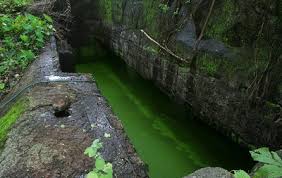
Conclusion: A Step Back in Time
Mangad Fort, though not as widely recognized as other iconic forts in Maharashtra, holds an undeniable charm that captivates anyone who ventures to explore it. For those passionate about history, this fort offers a rare opportunity to step back in time and experience the indomitable spirit of the Maratha Empire. Unlike the more crowded and commercialized forts, Mangad remains a peaceful and serene escape, providing a more intimate connection to the past.
As you explore the ruins of the fort, the remnants of its once-imposing structure tell the story of a time when it stood as a sentinel, guarding the land from invaders. The strategic location of the fort provides an insight into the military brilliance of the Marathas, who understood the importance of positioning their strongholds in places with natural defense advantages. Walking in the footsteps of those who once defended their territory brings a deeper appreciation for the struggles and triumphs that shaped this region’s history.
The trek to Mangad Fort itself is an adventure that allows you to witness nature’s beauty at its finest. The lush greenery, cascading waterfalls, and panoramic views of the surrounding mountains make the journey worthwhile. The peaceful surroundings provide a perfect escape from the noise and chaos of modern life, offering a tranquil setting where you can reflect on the historical significance of the fort.
For history enthusiasts, the fort is a treasure trove of stories. From its military purpose to its role in safeguarding the region during the Maratha Empire, each stone of the fort seems to whisper tales of the warriors who once called it home. The ancient walls and watchtowers may be in ruins, but their silent presence speaks volumes about the legacy they protected.
For trekkers and adventure seekers, Mangad Fort offers a rewarding challenge. The moderate difficulty level of the trek makes it an ideal choice for those looking for an adventure that isn’t too overwhelming but still provides a sense of achievement. The path to the top, with its winding trails and scenic landscapes, is as rewarding as the destination itself. Whether you’re a seasoned trekker or a beginner, the fort’s trek provides an exhilarating experience that will stay with you long after you’ve left.
Moreover, the surrounding biodiversity adds another layer of allure to the fort. The Western Ghats, home to unique flora and fauna, enhance the fort’s charm. From the occasional sightings of exotic birds to the dense forests and wildlife, Mangad Fort is an ideal spot for nature lovers and wildlife enthusiasts to immerse themselves in the beauty of Maharashtra’s landscapes.
Mangad Fort Map
Follow More Fort
